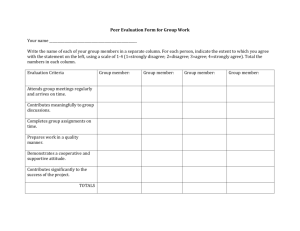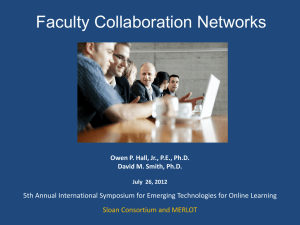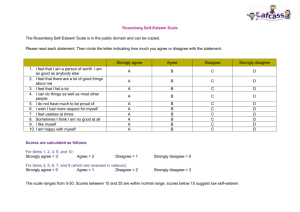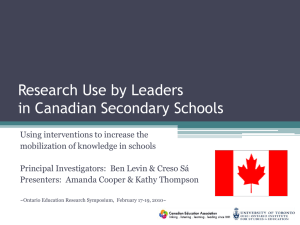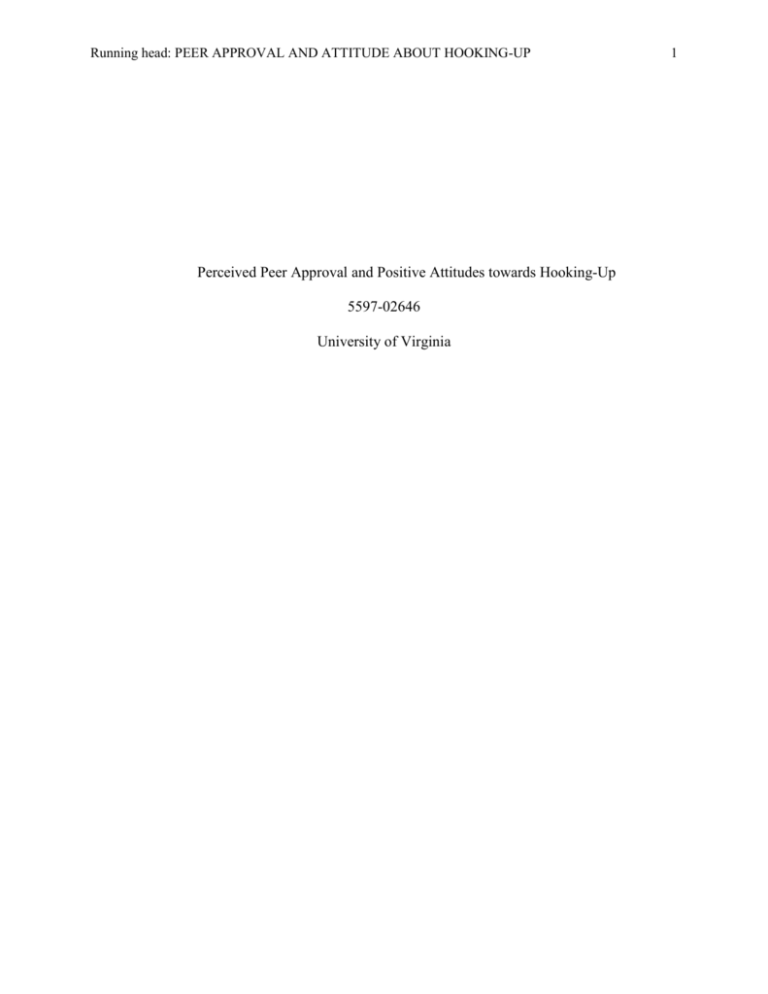
Running head: PEER APPROVAL AND ATTITUDE ABOUT HOOKING-UP
Perceived Peer Approval and Positive Attitudes towards Hooking-Up
5597-02646
University of Virginia
1
PEER APPROVAL AND ATTITUDE ABOUT HOOKING-UP
Abstract
The study investigates the influence of peers on young adults’ attitudes about hooking-up.
University undergraduates (n = 107) completed surveys measuring their attitudes towards
hooking-up and their friends’ attitudes towards hooking-up. It was hypothesized that perceived
peer approval would predict positive attitude towards hooking-up. In accordance with the
hypothesis, perceived peer approval of hooking-up was shown to predict participants’ attitude
towards hooking-up. This result indicates that young adults are susceptible to peer influence on
attitudes towards risky sexual behaviors, and that universities should implement programs to
combat this potential problem.
Word count: 90
2
PEER APPROVAL AND ATTITUDE ABOUT HOOKING-UP
3
Perceived Peer Approval and Positive Attitudes towards Hooking-Up
Hooking-up, or engaging in intimate behaviors in a non-committed relationship, is
common among college students, with a majority of students reporting hooking-up in the past
year (Owen, Rhoades, Stanley, & Fincham, 2008). The college environment, which generally
entails extensive peer-to-peer contact, stress, and alcohol use, can create a “hook-up culture,”
where hooking-up is perceived as the norm. These behaviors are associated with repercussions
such as sexually transmitted diseases of negative emotions (Owen et al., 2008). The current study
attempts to find a predictor of positive attitude toward hooking-up among college students to
help understand why young adults hook-up and the effects of peer pressure on hook-up behavior.
Studies have been conducted to investigate factors that lead young adults to pursue hookups rather than relationships. Researchers studied the effect of demographic variables and
psychosocial factors on college students’ frequency of hooking-up in the past year (Owen,
Rhoades, Stanley, & Fincham, 2008). The researchers hypothesized that psychological wellbeing in men and more permissive attitudes toward hooking-up would be associated with a
greater likelihood to hook-up. Undergraduates filled out surveys that measured emotional
reaction to hooking-up and attitudes on hooking-up. In opposition to the hypothesis, hook-up
rates between men and women were not significantly different, showing that hook-up rates were
equal for both genders. In accordance with the hypothesis, more positive attitudes about
hooking-up were associated with a higher likelihood of hooking-up for both sexes. Higher
psychological well-being increased likelihood of hooking-up for men only, and the greatest
percentage of men reported positive emotions about past hook-ups, whereas the greatest
percentage of women reported negative emotions about past hook-ups. The negative reaction of
many women to hooking-up may imply that hooking-up is a problem on college campuses,
PEER APPROVAL AND ATTITUDE ABOUT HOOKING-UP
4
causing emotional distress for young women. Judging from the potential negative outcomes of
hooking-up, the researchers suggest instating educational programs about hooking-up at colleges.
A different group of researchers also studied the predictors of hooking-up, but in contrast
to Owen et al. (2008), they specifically examined how demographic features, in addition to
loneliness and depression affected hook-up rates (Owen, Fincham, & Moore, 2010). The
researchers predicted that students would be more likely to hook-up if they had prior hook-up
experience, greater depressive symptoms, lower levels of thoughtfulness about relationships, and
previous positive or negative emotional reactions to hooking-up. Further, researchers
hypothesized that hook-up levels would correlate with loneliness levels. By studying survey
results from a sample of 394 college student participants, they concluded that depression was
affected by hooking-up, with hooking-up increasing depressive feelings in participants who
reported normal feelings prior to hooking-up. However, participants who were depressed before
hooking-up reported feeling less depressed after hooking-up. These two findings, along with the
negative emotions women felt about past hook-ups noted by Owen et al. (2008), indicate that
hooking-up affects participants’ emotional states, and can cause negative emotions in previously
well-adjusted individuals.
Participants who reported participating in hook-ups scored lower on levels of
thoughtfulness about relationships than their peers (Owen, Fincham, & Moore, 2010). This
finding indicates a level of rashness or lack of conscientiousness in those participating in random
hook-ups. The researchers also found that previous hook-up experience predicted more future
hooking-up. This corresponds with the finding by Owen et al. (2008) that more positive attitudes
towards hooking-up predicted higher likelihood of hooking-up. Individuals with a positive
attitude toward hooking-up are more likely to hook-up and continue to hook-up.
PEER APPROVAL AND ATTITUDE ABOUT HOOKING-UP
5
Both of the previous studies address both demographic and psychosocial factors that
influence students’ tendency to hook-up. However, they do not address why young adults, in
particular, are more inclined to have positive attitudes toward and engage in hook-ups and other
risky behaviors. Factors that influence young adults to make risky decisions and poor choices
also affect their likelihood to hook-up, because hooking-up may be classified as a risky behavior
due to the potential health repercussions associated with it, like sexually transmitted diseases and
unwanted pregnancy. Risky driving behavior, like speeding or inattention to the road, can
produce health risks and is common among young people, and is thus comparable to hooking-up.
Researchers investigated risky driving behavior in teens resulting from peer pressure, predicting
that the presence of peers in the vehicle would increase the tendency to engage in risky driving
behavior (Shepherd, Lane, Tapscott, & Gentile, 2011). The selected male students participated in
a realistic digital driving simulation twice: once alone and once with two confederates present,
who gave pro-risk encouragement, anti-risk warnings, or neutral conversation. The results
confirmed the researchers’ hypothesis, because participants exposed to the pro-risk condition
indeed engaged in riskier driving behavior. The gender of the confederates did not impact the
degree of social influence, suggesting that both genders equally influence male drivers.
Replications of the study found that women given the pro-risk condition crashed more than men,
suggesting that women are more likely to be pressured into risky behaviors than men (Shepherd
et al., 2011). The earlier finding of Owen et al. (2008) that women feel more negative emotions
after hooking-up may stem from their susceptibility to be pressured, as found by Shepherd et al.
(2011).
Previous research demonstrates young adults’ susceptibility to peer pressure and the
influence this pressure has on risky behavior, particularly on poor driving. These results can be
PEER APPROVAL AND ATTITUDE ABOUT HOOKING-UP
6
transferred over to risky sexual behaviors, which, like risky driving behaviors, have both
negative health outcomes and are common in young adults. The negative emotional effects of
hooking-up supported by Owen et al. (2008) and Owen et al. (2010) also classify it as a form of
risky behavior. The results of Shepherd et al. (2011) strongly suggest that peer approval of risky
behavior causes young adults to behave in more risky manners and favor these behaviors.
Drawing from these findings, it was hypothesized that perceived peer approval predicts positive
attitude toward hooking-up (previously defined as intimate behavior in a non-committed
relationship). Furthermore, drawing from the finding of Owen et al. (2008) than women feel
more negative emotions after hooking-up, it was hypothesized that more men than women would
report a positive attitude toward hooking-up.
Method
Participants
Researchers distributed surveys to 107 University of Virginia students, ages ranging from
18-23 (M = 20.08, SD = 1.07). Forty-three percent of respondents were male (n = 46).
Participants ranged from first-years to fourth-years in school (M = 2.45, SD = 0.92). Only 105 of
the 107 participants responded to the item: “People who participate in random hookups are
degrading themselves.” Only 103 of the 107 participants responded to the item: “My friends
think it is perfectly acceptable to engage in random hookups (defined as more than kissing) in a
non-committed relationship.” The participants who did not respond either left the answer blank
or circled N/A. These missing data will not likely affect my results or conclusions significantly
because the majority of participants still answered the items. However, those who chose not to
answer may have declined to do so because they felt uncomfortable answering, and those
PEER APPROVAL AND ATTITUDE ABOUT HOOKING-UP
7
responses might have varied from the mean. The data was collected at various locations on a
university campus, and participants gave consent to fill out a survey.
Materials
The survey examined relationships, both romantic and platonic. The current study
examined participants’ attitude towards hooking-up and their friends’ attitudes towards hookingup. Personal attitude towards hooking-up was operationalized with the survey item “People who
participate in random hookups are degrading themselves,” to which participants could respond
on a scale of -3 (strongly disagree) to 3 (strongly agree). Participants were given the option to
circle “N/A.” Perceived peer attitude towards hooking-up was operationalized with the survey
item “My friends think it is perfectly acceptable to engage in random hookups (defined as more
than kissing) in a non-committed relationship,” to which participants could respond on the
aforementioned scale. See the Appendix for the full survey.
Procedure
On a university campus, people were approached and asked if they were university
undergraduate students. Pending confirmation, participants were given informed consent forms
and surveys, which they completed and returned to the researcher.
Results
Correlation was used to examine the relationship between the two primary variables. The
two primary variables showed a significant positive correlation of small to medium magnitude,
with participants’ attitudes towards hooking-up (M = -0.11, SD = 1.78) becoming more positive
as friends’ attitudes toward hooking-up (M = 0.73, SD = 1.83) become more positive (r = .40, p <
.0005). See Figure 1 for a graphical representation of the data. A regression equation was
calculated to determine how one variable predicted the other. The regression equation for
PEER APPROVAL AND ATTITUDE ABOUT HOOKING-UP
8
predicting participants’ attitudes towards hooking-up from friends’ attitudes toward hooking-up
is:
Participants’ attitudes towards hooking-up = -0.17 + 0.39 (friends’ attitudes toward hooking-up)
The measure of R2 was taken to determine the percentage of variance in one variable that the
other variable explained, and researchers found that sixteen percent of the variance in attitude
toward hooking-up is explained by friends’ attitudes toward hooking-up (R2 = .16).
An independent means T-test was used to examine the secondary hypothesis that more
men than women would report a more positive attitude toward hooking-up. Contrary to the
hypothesis, men (M = -.27, SD= 2.00) did not report a significantly more positive attitude
towards hooking-up than women (M = 0.00, SD = 1.59), t (103) = 0.76, p = .225.
Discussion
In accordance with the hypothesis, perceived peer approval predicts positive attitude
towards hooking-up (previously defined as intimate behavior in a non-committed relationship).
However, contrary to the secondary hypothesis, men did not report significantly more positive
attitudes towards hooking-up than women. The results of this study support findings by Shepherd
et al. (2011) that young adults are susceptible to peer pressure and influence. Men were expected
to have a more positive attitude towards hooking-up than women based on the finding of Owen
et al. (2008) that women feel more negative emotions after hooking-up. However, this hypothesis
was not supported, perhaps because the findings of Owen et al. (2008) only apply to post hookup attitude rather than attitude in general.
The result that friends’ attitudes towards hooking-up predict participants’ attitudes
towards hooking-up is meaningful because it implies that young adults are indeed susceptible to
peer influence on risky behaviors like hooking-up. Conversely, the finding may also suggest that
PEER APPROVAL AND ATTITUDE ABOUT HOOKING-UP
9
those who view hooking-up positively are more likely to befriend others who share their attitude.
Both of these patterns suggest the importance of friends’ attitudes towards risky sexual behavior.
Hooking-up is an important problem to address at colleges because of the potential health risks,
like sexually transmitted diseases, emotional distress, and unwanted pregnancy (Owen et al.,
2008). Men did not differ significantly from women in their attitudes towards hooking-up,
perhaps because of the finding by Owen et al. (2008) that men and women hook-up at equal
rates. If men and women hook-up at equal rates, then they may be equally likely to have a
positive attitude towards hooking-up. However, since Owen et al. (2008) also found that women
feel more negative emotions after hooking-up, it is important that universities address young
women in particular and increase their awareness of the potential emotional outcomes of random
hook-ups.
Several limitations exist in this study. One potential limitation is that due to the sensitive
nature of the survey items, respondents may not have answered completely honestly for fear that
their surveys could be traced back to them. This fear of lack of anonymity could have caused a
problem by skewing results to more neutral scores rather than more extreme scores. This could
have affected the significance of the data. Perhaps a different administration technique, such as
administering the survey online, would have made participants more certain of the anonymity of
their answers, and would have resulted in more honest responses. Also, this survey only analyzed
what the respondents believed to be their friends’ attitudes on hooking-up, rather than their
friends’ actual attitudes on hooking-up, a problem because the two results might not actually
agree. To measure the actual attitudes of the friends of the respondents, the same surveys could
be given to the self-identified close friends of each respondent. This method would allow the
researchers to analyze whether the respondents’ perceptions of their friends’ attitudes on
PEER APPROVAL AND ATTITUDE ABOUT HOOKING-UP
10
hooking-up aligned with their friends’ actual attitudes on hooking-up. This data would allow the
researchers to know whether the peer influence on hooking-up is based more on perceptions or
reality.
Further research could be conducted to determine actual hook-up rates rather than just
attitudes towards hooking-up, to compare whether attitudes accurately reflect behavior. To
measure this, researchers could administer surveys asking participants to estimate the number of
random hook-ups in which they engage in a month. The researchers could then compare the
results to that survey item to the item measuring attitudes towards hooking-up to see whether
respondents with more positive attitudes also hooked up more frequently. Experimental research
could be conducted to measure the influence of peer pressure on hooking-up. Participants could
view images of people the opposite sex on a computer screen and rate the overall physical
attractiveness of each person and whether they would engage in a random hook-up with the
person in the image. This step would then be replicated with a confederate in the testing room
giving positive feedback on the attractiveness of each image and the desirability of a hook-up
with the depicted person. Filler questions would be included so the participant was unaware of
the experiment’s intent. A design like this would give quantitative data regarding the influence of
peers on attitude towards hooking-up. Furthermore, studies could be conducted to examine other
factors that influence a person to view hooking-up negatively or positively, such as religiosity
and attitudes toward underage alcohol consumption. Results from such studies could help
determine which factor most influences a young adult to hook-up, and could determine the best
way to address the issue of a “hook-up culture” at colleges.
Overall, the result that perceived peer approval predicts a positive attitude towards
hooking-up exemplifies the important role that universities should play in educating students
PEER APPROVAL AND ATTITUDE ABOUT HOOKING-UP
11
about peer pressure and hooking-up. The opinion of their peers significantly matters to young
adults and can influence their decision whether to hook-up or not. That men and women view
hooking-up equally shows that both groups need to be educated for their own personal health and
well-being. To combat the risk of peer influence on hook-up behavior, universities could
implement seminars at the beginning of each academic year to reiterate the importance of safe
sexual practices and to emphasize one’s personal choice in deciding comfort level towards
hooking-up.
PEER APPROVAL AND ATTITUDE ABOUT HOOKING-UP
12
References
Owen, J., Fincham, F.D., & Moore, J. (2011). Short-term prospective study of hooking
up among college students. Archives of Sexual Behavior, 40, 331-341.
Owen, J.J., Rhoades, G.K., Stanley, M.S., & Fincham, F.D. (2008). “Hooking up” among
college students: Demographic and psychosocial correlates. Archives of Sexual Behavior,
39, 653-663.
Shepherd, J.L., Lane, D.J., Tapscott, R.L., & Gentile, D.A. (2011). Susceptible to social
influence: Risky “driving” in response to peer pressure. Journal of Applied Social
Psychology, 41, 773-797.
PEER APPROVAL AND ATTITUDE ABOUT HOOKING-UP
13
Appendix
The following survey asks some questions concerning your views on relationships and thoughts and feelings about
yourself. The survey is anonymous, and there is no right or wrong answer. Please respond as openly as possible, but
you do not have to answer any question for any reason. It should take you about 5 minutes to complete. Thank you for
your time.
Please circle the choice that best matches your agreement with the following statements:
I feel that, at this point in my life, I am capable of being involved in a healthy, successful romantic relationship.
|--------------------|--------------------|--------------------|--------------------|--------------------|
Strongly
Disagree
Somewhat
Somewhat
Agree
Strongly
Disagree
Disagree
Agree
Agree
N/A / Prefer
Not to Answer
I feel unhappy with my level of adjustment (e.g., social, academic, emotional) to life at UVA.
|--------------------|--------------------|--------------------|--------------------|--------------------|
Strongly
Disagree
Somewhat
Somewhat
Agree
Strongly
Disagree
Disagree
Agree
Agree
N/A / Prefer
Not to Answer
People who participate in random hookups are degrading themselves.
|--------------------|--------------------|--------------------|--------------------|--------------------|
Strongly
Disagree
Somewhat
Somewhat
Agree
Strongly
Disagree
Disagree
Agree
Agree
N/A / Prefer
Not to Answer
While growing up, I witnessed a healthy relationship among caregivers in my household.
|--------------------|--------------------|--------------------|--------------------|--------------------|
Strongly
Disagree
Somewhat
Somewhat
Agree
Strongly
Disagree
Disagree
Agree
Agree
N/A / Prefer
Not to Answer
I would characterize my relationship with my parent(s)/caregiver(s) as comfortable, secure, and trusting.
|--------------------|--------------------|--------------------|--------------------|--------------------|
Strongly
Disagree
Somewhat
Somewhat
Agree
Strongly
Disagree
Disagree
Agree
Agree
Currently, I have a good relationship with my parents.
N/A / Prefer
Not to Answer
PEER APPROVAL AND ATTITUDE ABOUT HOOKING-UP
|--------------------|--------------------|--------------------|--------------------|--------------------|
Strongly
Disagree
Somewhat
Somewhat
Agree
Strongly
Disagree
Disagree
Agree
Agree
14
N/A / Prefer
Not to Answer
At least one of my parents or caregivers was very critical of me growing up.
|--------------------|--------------------|--------------------|--------------------|--------------------|
Strongly
Disagree
Somewhat
Somewhat
Agree
Strongly
Disagree
Disagree
Agree
Agree
N/A / Prefer
Not to Answer
Growing up, my parents put a lot of pressure on me to succeed in all of my activities and schoolwork.
|--------------------|--------------------|--------------------|--------------------|--------------------|
Strongly
Disagree
Somewhat
Somewhat
Agree
Strongly
Disagree
Disagree
Agree
Agree
N/A / Prefer
Not to Answer
I always take great care of my health (i.e., physical, mental).
|--------------------|--------------------|--------------------|--------------------|--------------------|
Strongly
Disagree
Somewhat
Somewhat
Agree
Strongly
Disagree
Disagree
Agree
Agree
N/A / Prefer
Not to Answer
I view myself as physically attractive.
|--------------------|--------------------|--------------------|--------------------|--------------------|
Strongly
Disagree
Somewhat
Somewhat
Agree
Strongly
Disagree
Disagree
Agree
Agree
N/A / Prefer
Not to Answer
I feel anxiety in social situations (e.g. I feel like I'm being judged, I feel self-conscious, I over-think how to act).
|--------------------|--------------------|--------------------|--------------------|--------------------|
Strongly
Disagree
Somewhat
Somewhat
Agree
Strongly
Disagree
Disagree
Agree
Agree
N/A / Prefer
Not to Answer
Since coming to college, I have made friends with whom I can share my deepest secrets.
|--------------------|--------------------|--------------------|--------------------|--------------------|
Strongly
Disagree
Somewhat
Somewhat
Agree
Strongly
N/A / Prefer
Not to Answer
PEER APPROVAL AND ATTITUDE ABOUT HOOKING-UP
Disagree
Disagree
Agree
15
Agree
I made good, strong friends in my first year of college.
|--------------------|--------------------|--------------------|--------------------|--------------------|
Strongly
Disagree
Somewhat
Somewhat
Agree
Strongly
Disagree
Disagree
Agree
Agree
N/A / Prefer
Not to Answer
My friends think it is perfectly acceptable to engage in random hook ups (defined as more than kissing) in a
non-committed relationship.
|--------------------|--------------------|--------------------|--------------------|--------------------|
Strongly
Disagree
Somewhat
Somewhat
Agree
Strongly
Disagree
Disagree
Agree
Agree
N/A / Prefer
Not to Answer
I am willing to engage in a long distance relationship.
|--------------------|--------------------|--------------------|--------------------|--------------------|
Strongly
Disagree
Somewhat
Somewhat
Agree
Strongly
Disagree
Disagree
Agree
Agree
N/A / Prefer
Not to Answer
Free response items. Please leave blank if you prefer not to answer.
On average, how many days per week do you participate in a planned social activity (i.e. party, movie, club,
etc.)?______________
How many close friends do you have at college?______________
How many siblings did you grow up with?_______________
What is the length of your longest committed romantic relationship? (Please list number of
months)______________
How often do you currently attend church or religious services? Select one.
A) never
B) major holidays or rarely
PEER APPROVAL AND ATTITUDE ABOUT HOOKING-UP
16
C) about once a month
D) once a week
E) more than once a week
What is the most common letter grade you have received over your college career? Circle One.
A
A-
B+
What is your gender?
B
B-
Male
C+
C
C-
D+
Female
How old are you? ______________
What is your year in school?
1st
2nd
3rd
4th
5th
D
PEER APPROVAL AND ATTITUDE ABOUT HOOKING-UP
Figure 1. Attitudes towards Hooking-Up versus Friends’ Attitudes towards Hooking-Up.
17

